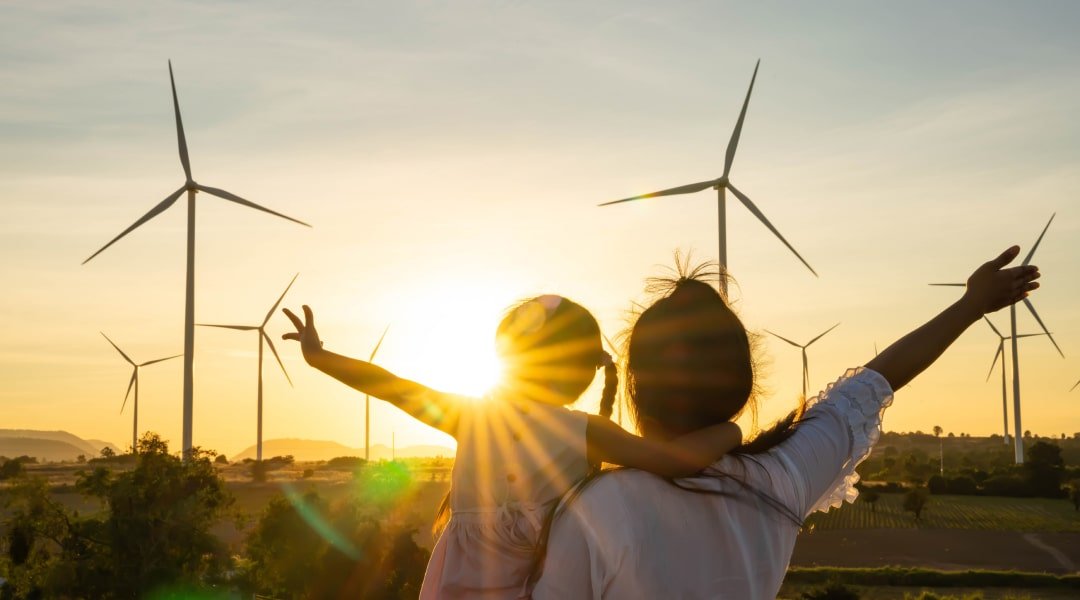Common Climate Change Myths, Debunked
In this age of misinformation, it’s easy to internalize incorrect information as truth. Separating myth from reality is a pivotal step in climate change understanding.
Below, we tackle some common climate myths, because a perspective grounded in the truth prepares the world for action.
Myth: The earth’s climate has always changed
It's true that the Earth’s climate has experienced shifts over millions of years. However, what we're currently witnessing is different. The rate of change is unprecedented, and scientists agree that human activity, particularly emissions of greenhouse gases, is the primary cause. According to the Intergovernmental Panel on Climate Change (IPCC), recent warming trends are "extremely likely" to be the result of human activity since the mid-20th century.
Myth: Global warming is something to worry about in the future, not now.
Climate change is not just a distant threat; its effects are already being felt worldwide. From extreme weather events and rising sea levels to public health risks, the impacts of climate change are immediate, and action is necessary to prevent further damage. Per the United Nations, we are at a critical juncture where the decisions we make now will shape the planet's future for generations to come.
Myth: Climate change isn't real because it's still cold
Weather and climate are not the same. Weather fluctuates day-to-day, but climate is the average over time and space. Indeed, even in a warming world, winters can bring freezing temperatures due to natural variability. However, the global temperature trend shows an upward trajectory, and extreme cold events are actually becoming less frequent.
Myth: Heatwaves and wildfires have nothing to do with climate change
On the contrary, heatwaves and wildfires have a direct link to climate change. The World Weather Attribution finds that climate change significantly increases the likelihood of extreme weather events. Hotter global temperatures dry out vegetation, making it more susceptible to catching fire. Thus, as the planet gets warmer, we expect more intense and frequent wildfires.
Myth: Plants need carbon dioxide, so more is better
While plants require carbon dioxide (CO2) for photosynthesis, an excess of CO2 in the atmosphere does not translate to a utopian environment for plant life. Increased levels of CO2, coupled with other climate change effects like heat stress and water scarcity, can harm plant health. Additionally, too much atmospheric CO2 contributes to the greenhouse effect, exacerbating global warming.
Myth: Renewable energy is more expensive
The cost of renewable energy is decreasing rapidly. According to the International Renewable Energy Agency (IRENA), the cost of solar and wind power continues to fall, making them competitive with or even cheaper than fossil fuels in many cases. Plus, thanks to rebates and tax credits from the Inflation Reduction Act, it’s never been less expensive to install solar at home. Transitioning to renewables not only has the potential for long-term savings but also benefits public health and the environment.
Myth: Renewable energy only works when it's windy and sunny
Renewable energy technologies have advanced significantly. Systems like battery storage, diverse renewable sources, and grid management innovations ensure a steady power supply even when the sun isn't shining or the wind isn't blowing. Multiple studies, including those by The National Renewable Energy Laboratory (NREL), support that a reliable, affordable, and low-emission grid powered largely by renewables is achievable.
What now?
Debunking these myths is not just about spreading awareness; it's about building a strong, well-informed community ready to take decisive, collective action on climate change. Find additional common climate change myths here, and then consider taking action. Every single effort, whether big or small, counts.

